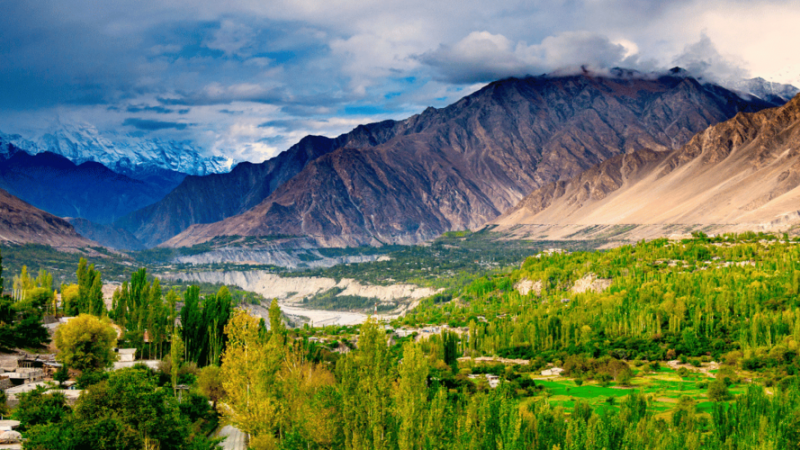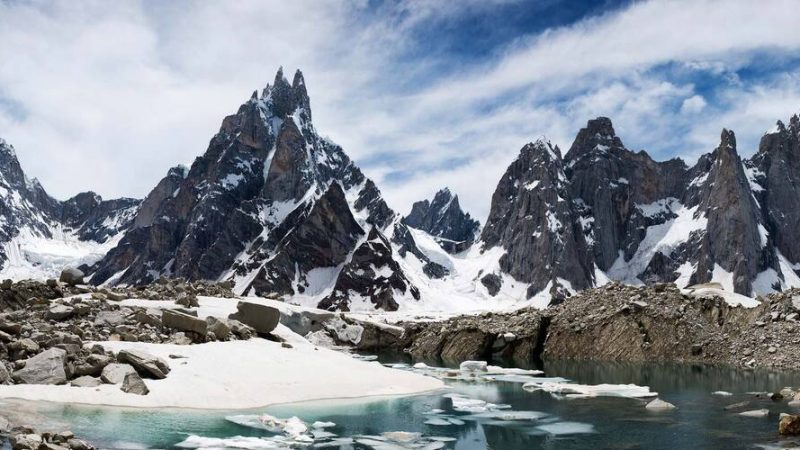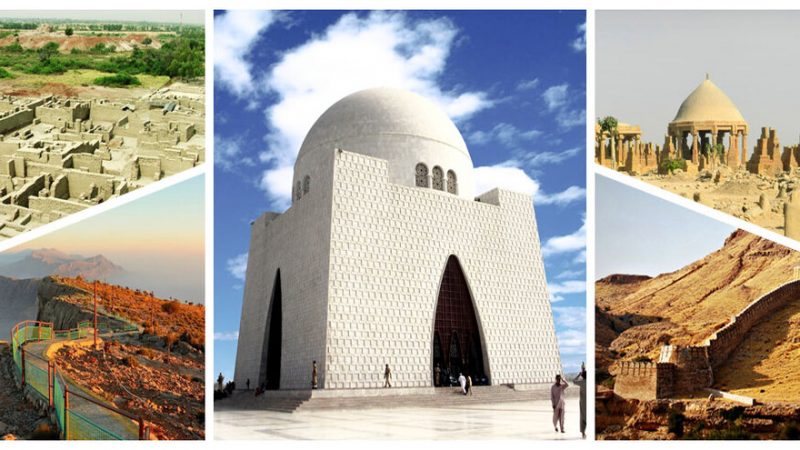Pakistan’s Ranikot Fort Is The World’s Largest Fort
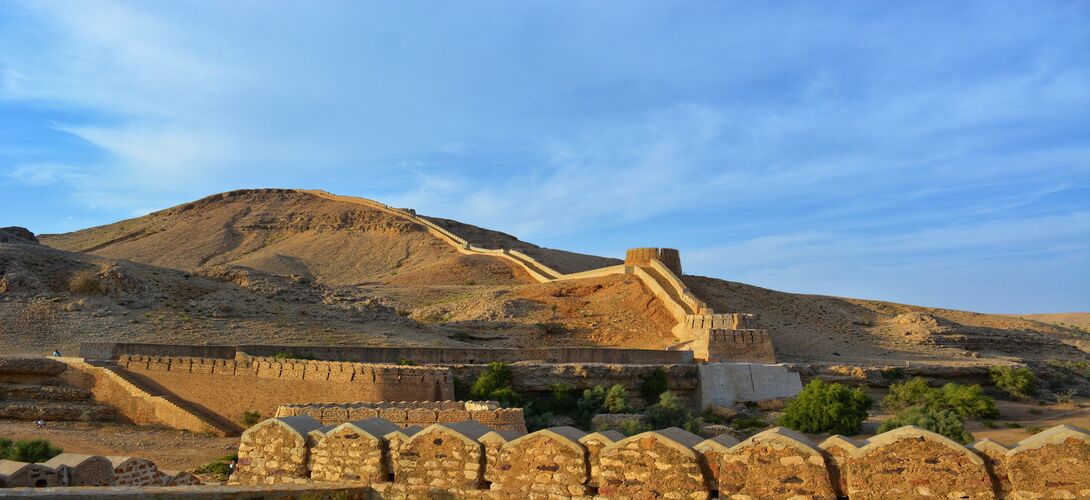
In the Jamshoro District of Sindh, close to Sann, sits the old Talpur fort known as Ranikot Fort. With a diameter of roughly 32 kilometres, Ranikot Fort is thought to be the largest fort in the world.
It is also known as The Great Wall of Sindh. The Great Wall of China has been likened to the fort’s walls. The location was put forth by the Pakistan National Commission in 1993 and has since been included on the preliminary list of UNESCO World Heritage Sites.
The Antiquities Act of 1975 and its later revisions recognize the Ranikot Fort as a historical landmark and granted it protection.
| Built | 17th century |
| Restored | Early 18th and early 19th centuries |
| Area of Ranikot Fort | Diameter of roughly 32 kilometers |
History of Ranikot Fort
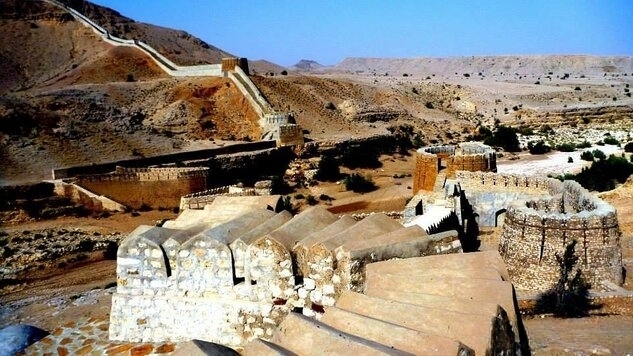
Ranikot Fort is one of the most famous forts in Pakistan. Recent evidence indicates that the Ranikot Fort originated under the Talpurs and was built during the administration of Nawab Wali Muhammed Leghari during the Talpur dynasty.
Previously, it was thought that the fort was built during the regimes of the Sassanians, the Scythians, the Parthians, or the Bactrian Greeks.
Although archaeologists claim that it was first built in the 17th century, Sindh archaeologists today concur that the Talpur dynasty rebuilt some of the current structures in 1812 for a cost of 1.2 million rupees. When the Amirs of Sindh were placed under British colonial administration, Ranikot fort’s battlements served as their final capital.
The charcoal buried in the mortar of a fallen pillar of the Ranikot fort’s eastern gate was subjected to radiocarbon analyses at the Sann Gate.
These studies have shown that this gate was likely restored in the early 18th and early 19th centuries, before Britain invaded the fort and overthrew the Kalhoras or the Talpur Mirs of Sindh.
Location of Ranikot Fort
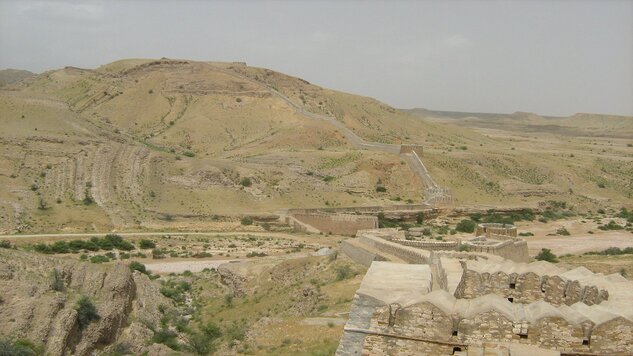
On the Indus Highway, Ranikot Fort, one of the most visited historical sites in Pakistan, is located 90 kilometres north of Hyderabad. The Indus Highway connects Karachi to Sann with ease.
It takes about an hour to reach there. Beginning a short distance from Sann, the closest town, a detour road travels to the fort through a rough 21 km path and eventually reaches the fort’s eastern gate, known as Sann Gate.
On the Pakistan Railway’s Kotri-Larkana line, Sann serves as the railhead. The Ranikot fort is located inside one of Pakistan’s largest national parks Kirthar.
Characteristics of Ranikot Fort

Following are a few of the major characteristics of the great Ranikot Fort:
- The massive Ranikor Fort is 31 kilometres.
- It connects numerous desolate summits of the Kirthar hills along contours.
- Three of the many bastions that are scattered around the Ranikot fort’s wall have a semi-circular shape.
- The perimeter of the fort is naturally steep and mountainous in the north, with fort walls enclosing the other three sides.
- There is a smaller fort within the larger fort called “Meeri Fort,” which is located approximately three kilometres from the Sann gate.
- It is said to have functioned as the palace of the Mir royal dynasty.
- Stone and lime mortar were used to erect the complete Ranikot fort structure. The fort has four rhomboid-shaped entry gates and is constructed in a zigzag pattern.
- Sann Gate, Amri Gate, Shah-Pere Gate, and Mohan Gate are the four gates of the Ranikot Fort. The Sann river cuts through two of the gates, one on each side. The first gate is on the western side and is difficult to approach because it is bordered by river water.
- There are two doors at the southern entry gate. Two niches with floral decorations and carved stones may be found inside the gates. The Sann gate is in good condition and may be scaled to the fort’s peak from either side for beautiful views of the surrounding landscape. The Meeri can also be entered through this gate.
Restoration of Ranikot Fort
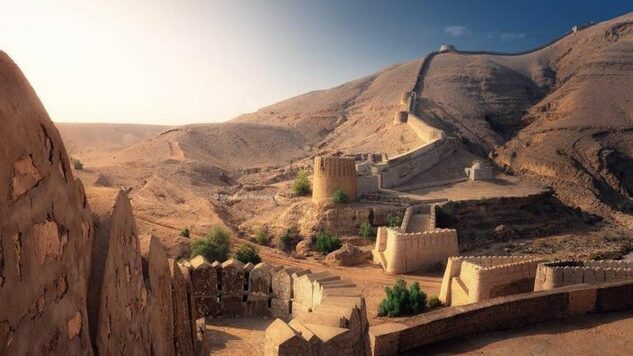
Nawab Wali Muhammed Leghari, the Sindhi Prime Minister during the Talpur dynasty, began the Ranikot Fort’s initial restoration. The Sann Gate complex, the defensive wall extending south to include the mosque, and the small Meeri fort all underwent restoration work.
These were carried out by the Dadu District government, the Sindh Department of Culture, and the Pakistani Archaeology Department.
Ranikot Fort is a popular tourist destination for both domestic and international tourists and travellers. The view of the captivating landscape from the top of the fortified walls is truly breathtaking. The area surrounding Ranikot Fort is generally barren but the fort stands out and exhibits its grandeur.
A number of travel agencies have been promoting Ranikot Fort as the ideal day-trip destination from Karachi. Tourists can plan a lot of recreational activities like musical nights and bonfires there.
A lot of people prefer camping at the site as well. You must plan your trip to Rani Fort this year if you haven’t already. It will surely be a memorable experience.


